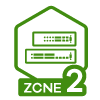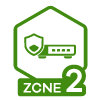[Nebula] Understanding the Orange Icon Status of Your Nebula AP
 Zyxel Employee
Zyxel Employee



As you navigate to Devices > Access points, you may come across different colored icons associated with the AP status. These colors serve as a useful way to visually represent the current state of the device, making it easier for users to understand and manage their network. One icon color you might encounter is orange. While you might be familiar with the green icon, indicating that everything is working perfectly, or the red icon signifying offline AP issue, the meaning behind the orange icon might not be as straightforward.
In this FAQ, we aim to clarify what the orange status icon on your Zyxel AP signifies, enabling you to take necessary actions to ensure the optimal performance of your network.
10/100Mbps link speed
The AP is currently operating in limited speed mode, which is linked at only 10/100Mbps. This issue often arises due to the quality of the Ethernet cables used or potential issues with the switch/gateway port. We recommend replacing the Ethernet cables connected to the AP with certified ones to ensure optimal performance. Additionally, you should change the specific port on the switch/gateway that the problematic AP is connected to.
If the issue persists even after replacing the cables and ports, we advise initiating the RMA process.
Clients overloading
AP with this status base on two possibilities below:
- When the user does not configure the Load Balance feature, there are 32 and above stations connected on the "same" radio of the AP.
For example, there are three 2.4GHz only SSID and one 5Ghz only SSID, if the sum of 2.4G clients is above 32 and no client is connected to the 5GHz SSID, the AP will show the AP status with an orange icon and “Client Overloading” description. If the sum of 2.4GHz clients is 30 and the sum of 5GHz clients is 31, the AP will not with clients overloading status since it does not fulfill the condition.
- When the user has configured the Load Balance feature, the connection amount reaches the value from the corresponding radio that the user set up.
For example, a user configures Load Balance (Configure > Access point > AP & port setting) with the maximum value of 3 clients for 2.4Ghz, 1 client for 5Ghz, and 10 clients for 6GHz, once there is a station connected to 5Ghz SSID, even no one connects to 2.4GHz and 6GHz, it will still show the client overloading status since the 5GHz connection amount hit the set up value, (maximum client device number for 5GHz is “1”)
Limited power mode
The AP is presently operating in a limited power mode. This issue arises from an insufficient power supply, which may occur when using an incompatible Power over Ethernet (PoE) adapter or PoE switch to power the AP.
To resolve this problem, we advise you to review the power requirements listed on the device's label sticker or in the specifications. Then, select and use a suitable PoE adapter or PoE switch that can provide the necessary power for the AP.
IP issue detected
There are some potential reasons led to your AP is experiencing a problem related to its IP settings:
- Your AP got the IP address, however, another device on the network was mistakenly configured with the same IP address, leading to an IP conflict.
Solution:
1/ Change the AP’s IP type into DHCP if its type is Static IP in current.
2/ Negativing to Monitor > Access points > Event logs and find the client/ device MAC that has the same IP with AP and change the client/ device’s IP or configure it’s IP type as DHCP to obtain the new IP.
- You have recently changed your network settings or replaced your router, and the AP's IP settings no longer align with the network's configuration. This could mean that the subnet, gateway, or DNS settings of the AP are incorrect. So, please check your router/ switch/ network setting.
VLAN issue detected
When an administrator accidently changes the management setting of an AP that causes it to go offline, the AP triggers its fallback mechanism. The fallback mechanism allows AP to revert to the previous VLAN settings before the administrator accidentally set the wrong VLAN settings. Doing so allows the AP to go back to online and notifies NCC to change its status to alert. The warning message showing “VLAN should be examined”. So, please check the VLAN setting on your router/ switch/ AP/ network.
The appearance of an orange status icon on your AP serves as an alert to issues that need your attention to ensure optimal network performance. Therefore, it's important to resolve these issues as soon as you notice them. By doing so, you can maintain an efficient and stable network environment, ensuring the best possible experience for all users connected to your AP.
Zyxel_Judy
Categories
- All Categories
- 441 Beta Program
- 2.9K Nebula
- 208 Nebula Ideas
- 127 Nebula Status and Incidents
- 6.4K Security
- 530 USG FLEX H Series
- 332 Security Ideas
- 1.7K Switch
- 84 Switch Ideas
- 1.3K Wireless
- 51 Wireless Ideas
- 6.9K Consumer Product
- 292 Service & License
- 461 News and Release
- 90 Security Advisories
- 31 Education Center
- 10 [Campaign] Zyxel Network Detective
- 4.7K FAQ
- 34 Documents
- 86 About Community
- 99 Security Highlight








